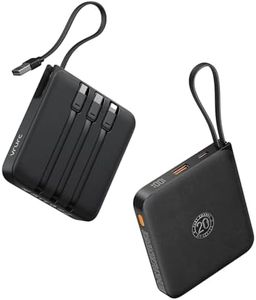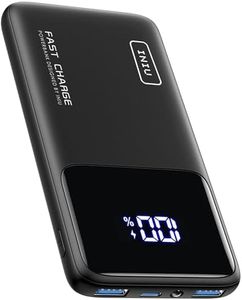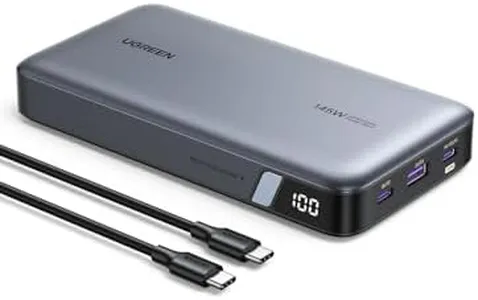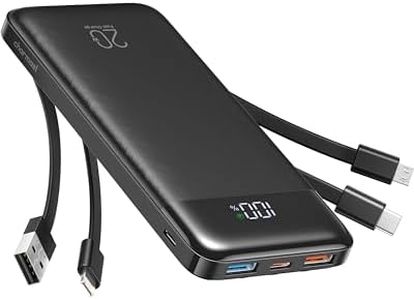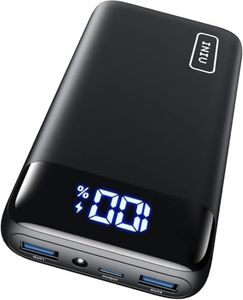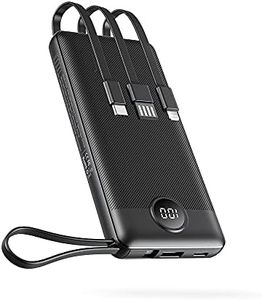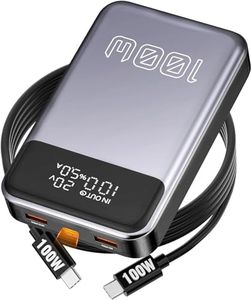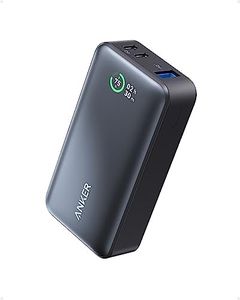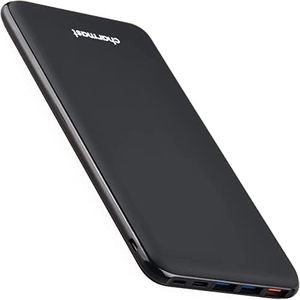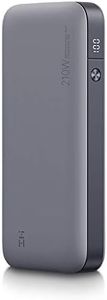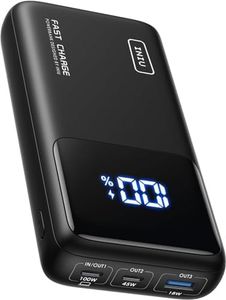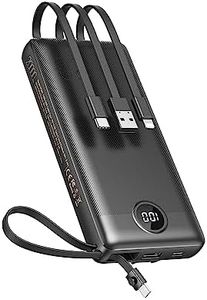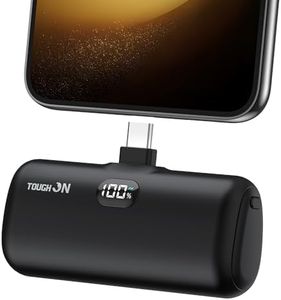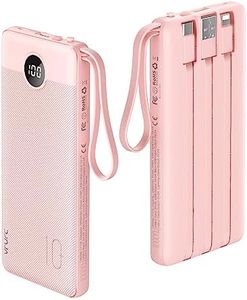We Use CookiesWe use cookies to enhance the security, performance,
functionality and for analytical and promotional activities. By continuing to browse this site you
are agreeing to our privacy policy
10 Best Portable Power Chargers
From leading brands and best sellers available on the web.Buying Guide for the Best Portable Power Chargers
When choosing a portable power charger, it's important to think about how and where you plan to use it. Portable chargers, also called power banks, keep your devices powered up on the go, but they come in different shapes, sizes, and capabilities. Start by considering what devices you'll be charging most often (like smartphones, tablets, or even laptops), how frequently you'll need to recharge them, and how portable you need the charger itself to be—do you want it to fit in your pocket, bag, or are you okay with something bulkier for longer periods away from a wall outlet? By understanding your daily charging needs and usage habits, you can narrow down the options to find a charger that fits seamlessly into your lifestyle.Capacity (mAh)Capacity is measured in milliamp-hours (mAh) and tells you how much energy the charger can store, which directly affects how many times it can charge your device before needing to be recharged itself. Lower capacities (under 5,000 mAh) are suited for emergency top-ups or a single full phone charge, making them ideal for light users or short commutes. Mid-range capacities (5,000–10,000 mAh) can typically fully charge a phone two or more times and are good for moderate users who want a balance of size and power. Higher capacities (over 10,000 mAh) can charge multiple devices several times and may even charge tablets or small laptops, but they will be larger and heavier. To choose the right one, match the capacity to your usage—go for higher capacity if you often run out of battery or need to power multiple devices, and a smaller one if portability is your top priority.
Output Power (Amps/Watts)Output power determines how quickly the power bank can charge your devices, usually expressed in amperage (A) or watts (W). Low output (1A or less) will charge your device slowly and is fine for older or small devices. A standard output (2A or 10W) suits most modern smartphones, providing reasonable charging times. Faster charging (2.4A–3A, or 12W–20W and higher, including 'fast charge' or 'quick charge' modes) is needed for tablets, newer devices, or those with larger batteries, letting you power up much faster. Consider your device's charging requirements; if you value speed or have power-hungry gadgets, choose a charger with higher output. For basic usage or older devices, lower output is usually sufficient.
Number and Type of PortsThe number and type of ports tell you how many devices you can charge at once and which cables you'll need. Some chargers have a single USB port, which is fine for basic needs, while others offer multiple ports for charging several devices simultaneously. The type of port matters too—USB-A is the classic rectangular shape and is widely compatible, while USB-C is becoming the standard for newer phones and devices, often allowing for faster and more flexible charging. If you own newer devices or want to future-proof your purchase, look for at least one USB-C port. If you charge multiple things at the same time, pick a power bank with more ports.
Size and WeightSize and weight impact how comfortable the charger is to carry daily. Smaller, lighter chargers are easier to slip into a pocket or purse, making them perfect for commutes and quick outings. Larger chargers offer more capacity and features but take up more space in your bag and add weight, which could be inconvenient if you're traveling light. Think about your regular activities—if you prefer to travel light, aim for something compact; if you prioritize capacity over portability, a larger option will serve better.
Recharging TimeRecharging time refers to how long the charger itself takes to go from empty to full when plugged into a wall outlet. Smaller power banks naturally recharge faster, sometimes in just a couple of hours, while bigger ones with more capacity can take much longer—up to overnight—unless they have a feature for fast input charging. If you want to use your charger frequently or on back-to-back days, pick one with a faster input or lower capacity for quicker recharges. If you only use it now and then or can leave it to recharge overnight, then the charging time is less of an issue.
Special Features (e.g., Pass-Through Charging, Display Indicators, Ruggedness)Some power banks offer extra features like pass-through charging (charging itself while also charging your device), built-in cables, digital displays showing exact battery percentage, or rugged/water-resistant designs for outdoor use. These extras can add convenience, provide better information about your charge status, or make the power bank suitable for specific environments. Think about your lifestyle—if you spend a lot of time outdoors, a rugged or water-resistant model could be worthwhile. If you prefer more information and convenience, look for clear battery indicators or pass-through charging.
